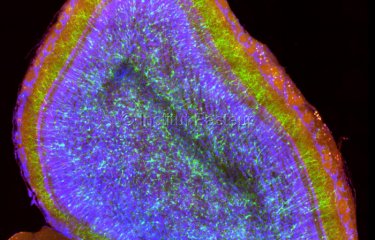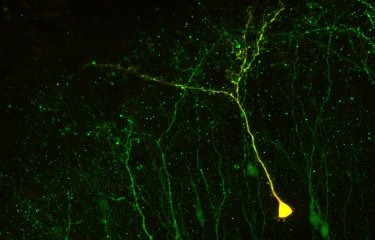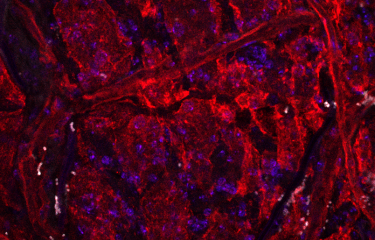Researchers at the Pasteur Institute and the CNRS (French National Centre for Scientific Research), in collaboration with the Karolinska Institute (Stockholm), have recently decoded the molecular bases of our reward system activation, a system which plays a central role in drug dependence. Their work was published in Neuron on 15 June 2006.
Press release
Paris, june 15, 2006
The dopaminergic neurons in the ventral tegmental area (VTA) are essential for the activation of our brain’s reward system that govern our motivation, pleasures and emotions, but also plays a central role in drug addiction.
Philippe Faure’s team at the Receptors and Cognition Unit, directed by Jean-Pierre Changeux, in association with the CNRS and the Department of Physiology and Psychology at the Karolinska Institute in Stockholm, have recently decoded the role played by acetylcholine’s nicotinic receptors in controlling this system.
There are almost a dozen different nicotinic receptor subunits, including 2 and 7 subtypes. All of them are activated by an endogenous neurotransmitter, acetylcholine but also by nicotine. Jean-Pierre Changeux and his colleagues have been studying the role of these receptors for many years, not only in tobacco dependence, but also in various cognitive functions. Each of these receptor types may have a specific physiological role and therefore constitute a distinct pharmacological target.
When one smokes a cigarette, nicotine stimulates the nicotinic receptors on dopaminergic neurons of the VTA, leading to an increase in the activity of these neurons, and associated sensations of pleasure. These sensations have been linked to specific firing pattern of the dopaminergic neurons. The researchers have recently discovered that this response to nicotine is due to a particular type of nicotine receptor, those containing the ß2 subunit. They have also demonstrated that the sole action of endogeneous acetylcholine on this receptor, that is without nicotine, increases the spontaneous appearance of such specific firing pattern, suggesting that these receptors are involved in the daily management of our emotions and pleasures.
This study is based on experiments comparing wild-type mice and mice lacking the b2- or 7 nAChR. It shows that the dopaminergic system activity is considerably reduced in the absence of ß2 receptors, and that selective re-expression of this subunit (by genetic transfer) in the VTA restores this activity. The a7 receptors, are not as important in this control mechanism but appear to modulate the response to nicotine once it is triggered.
Describing the modulation of the dopaminergic system by the "cholinergic" system in this way, the researchers emphasize the importance of the ß2 containing receptors as a pharmacological target, not only in the treatment of nicotine dependence, but also for other pathological conditions that might be linked to a defect in the activity of targets of the VTA dopaminergic neurons, such as Attention Deficit Hyperactivity Disorder (ADHD).
After having shed light on the endogenous mechanisms acting in the VTA, the teams are now continuing their exploration of the effects of nicotine in this critical area of drug addiction.
Sources :
"Hierarchical Control of Dopamine Neuron-Firing Patterns by Nicotinic Receptors" : Neuron. 15 juin 2006
Monica Mameli-Engvall (1,2), Alexis Evrard (1), Stéphanie Pons (1), Uwe Maskos (1), Torgny H. Svensson (2), Jean-Pierre Changeux (1) et Philippe Faure (1)
1 CNRS URA 2182 " Unité Récepteurs et Cognition ", Institut Pasteur, Paris
2 Karolinska Institute, Department of Physiology and Pharmacology, Stockholm, Suède
Contact press :
Institut Pasteur Press Office
Nadine Peyrolo ou Corinne Jamma
+33 (0)1 40 61 33 41 - cjamma@pasteur.fr
CNRS Press Office
Isabelle Bauthian
+33 (0)1 44 96 46 06 - isabelle.bauthian@cnrs-dir.fr







